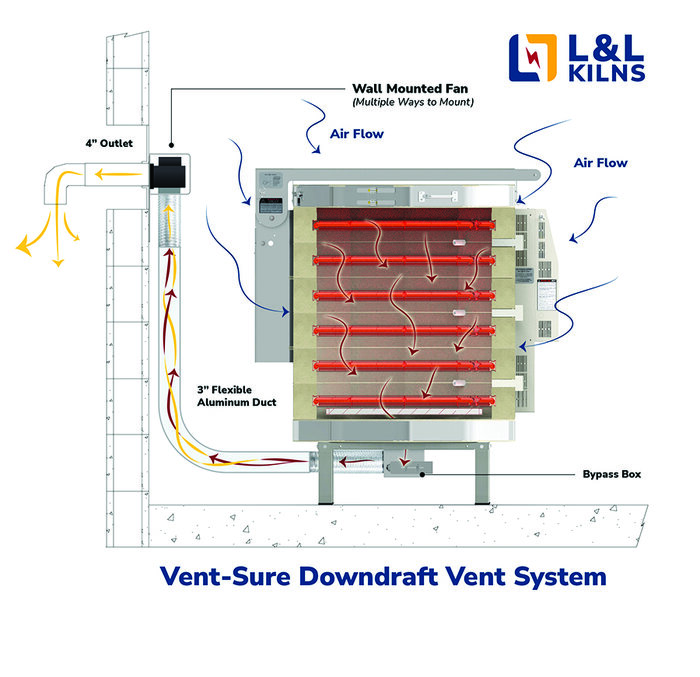How do I know if my vent is pulling enough air through?

- We recommend that you have a carbon monoxide monitor installed in your kiln room to monitor the carbon monoxide levels. This ensures that you will be in the know if any carbon monoxide build-up were to occur beyond safe levels. This would also most likely indicate that there is either a problem within the vent system or that it needs adjustment to increase the flow rate.
- You can also use a method that we call the "Smoke Method" to determine if the draw is sufficient. Here are the steps to take to help you adjust the bypass box to ensure you have an optimal draw.
- With power disconnected from the kiln and with the kiln empty, turn the vent on.
- Start with the bypass valve in the fully closed position. This will give it the maximum suction in the kiln.
- Light a piece of paper on fire or something that will create smoke. Blow it out, and hold it near the cracks around the closed lid.
- If the smoke is being pulled into the kiln around these door cracks, open the Bypass (decreasing flow from the kiln) until the smoke stops being pulled in, then back up the valve slightly, so the draw increases just slightly again. Try this when the kiln is at about 100°F.
- You can do the same test directly at the bottom hole with the kiln open and also to test the differential between the pull at the actual suction hole from the kiln and the pull around the lid. You can take the following maintenance procedures to help maintain the integrity of the vent system components thus keeping your vent system running optimally.
- Occasionally check for leaks in the aluminum duct. Replace if necessary. Check for corrosion especially if you are using clay with a high content of sulfur, phosphorus, or fluorine.
- Check for wax or carbon buildup if you are using a wax resist process or a high carbon-content clay.
- We recommend un-mounting the fan and blowing out the squirrel cage with compressed air every two years or so especially if you are in a very dusty or if you have it mounted on the floor where it is more likely to pick up dust.
- If the discharge duct of the vent is mounted pointing up you may get water that condenses in the duct to drop down and rust out the motor. Taking it apart and spraying it with WD-40 can restore the motor in some cases. We recommend having a water trap in the bottom of a long vertical duct run to drain off the water before it runs into the motor. This is not a problem when the vent has been mounted horizontally.
- Also see: vent-sure-instructions



